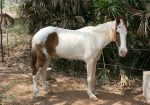Kathiawari Horse
Kathiawari is a sturdy breed of Indian horses hailing from the Kathiawar peninsula. It has close resemblance with the Marwari and the Arabian horses, though the Kathiawari is slightly stockier and taller than the finely featured Marwari horse. These horses were originally bred for use as cavalry mounts and warhorses that could travel long distances on very little rations.
Kathiawari Horse Pictures
- Kathiawari Horse Ears
- Kathiawari Horse Images
- Kathiawari Horse Photos
- Kathiawari Horse Pictures
- Kathiawari Horse Riding
- Kathiawari Horse Stallion
- Kathiawari Horse Stud
- Kathiawari Horse
- White Kathiawari Horse
- Kathiawari Horse Breede
- Kathiawari Horse Breeders
- Kathiawari Horse Mare
Quick Information
| Other Names | Kutchi, Cutchi, Kathi |
| Temperament / Personality | Intelligent, active, faithful, affectionate, brave |
| Physical Characteristics | Concave facial profile, broad forehead, short muzzle, large eyes; large, rounded nostrils, crested neck, well-sloping shoulders, prominent withers, relatively short body; well-developed quarter, well-proportioned legs, head and tail set high |
| Colors | Chestnut, gray, bay, and dun are common; pinto patterns are rare; black is not found |
| Height (size) | Less than 15 hands (152 cm, 60 inches) |
| Weight | 606 lbs (275 kg) on average |
| Common Uses | Farming, driving, riding; commonly used for tent pegging; also used by the mounted police units and the Indian army |
| Health | Evincing health with no known health conditions specific to the breed |
| Gaited | Yes; apart from the usual gaits, it performs the revaal (a quick, lateral movement) |
| Feeding/Diet | Grass, hay, alfalfa, water |
| Distinguishing Traits | Physical soundness, resistant to severe weather conditions, can survive on minimal rations |
| Country of Origin | India |
| Ancestors | Arabian, Mongolian, native horses of Kathiawar region |
| Breed Information | Breed Standards |
Video: Kathiawari Horse Running
History and Development
It is believed that horses inhabited the Indian west coast long before the Mughal Empire was established. During the Mughal Empire, Arabian horses were brought to the Indian subcontinent and bred with local horses, which created the ancestors of today’s Kathiawaris. The addition of Mongolian horse blood also improved the breed. This breeding practice was continued even during the British Rule in India.
Traditionally, noble households selectively bred sleek, wiry horses that could tolerate harsh conditions and carry people with weapons for long periods, and still be quick and light in action. This tradition of horse breeding among the nobility ended when India became independent.
Apart from the Kathiawar peninsula, these horses are now found in the Indian states of Rajasthan and Maharashtra. The government of Gujarat maintains studs at several districts including Junagadh, Amreli, Porbandar, Surendranagar, and Rajkot, some of which aim towards preserving the horse breed while others look to improve the local stock. A breed registry is maintained by the Kathiawari Horse Breeders’ Association.
Interesting Facts
- The Kathiawaris were known for their courage and loyalty in battle, defending their master even after being wounded.
- Some of the most beautiful Kathiawari horses are now produced at Panchal area of Gujarat.
- The most distinguishing characteristic of these horses is their inward-curving ears, which touch or may overlap each other at the tips.
















GOOD information is this but for more information can you suggest expert name